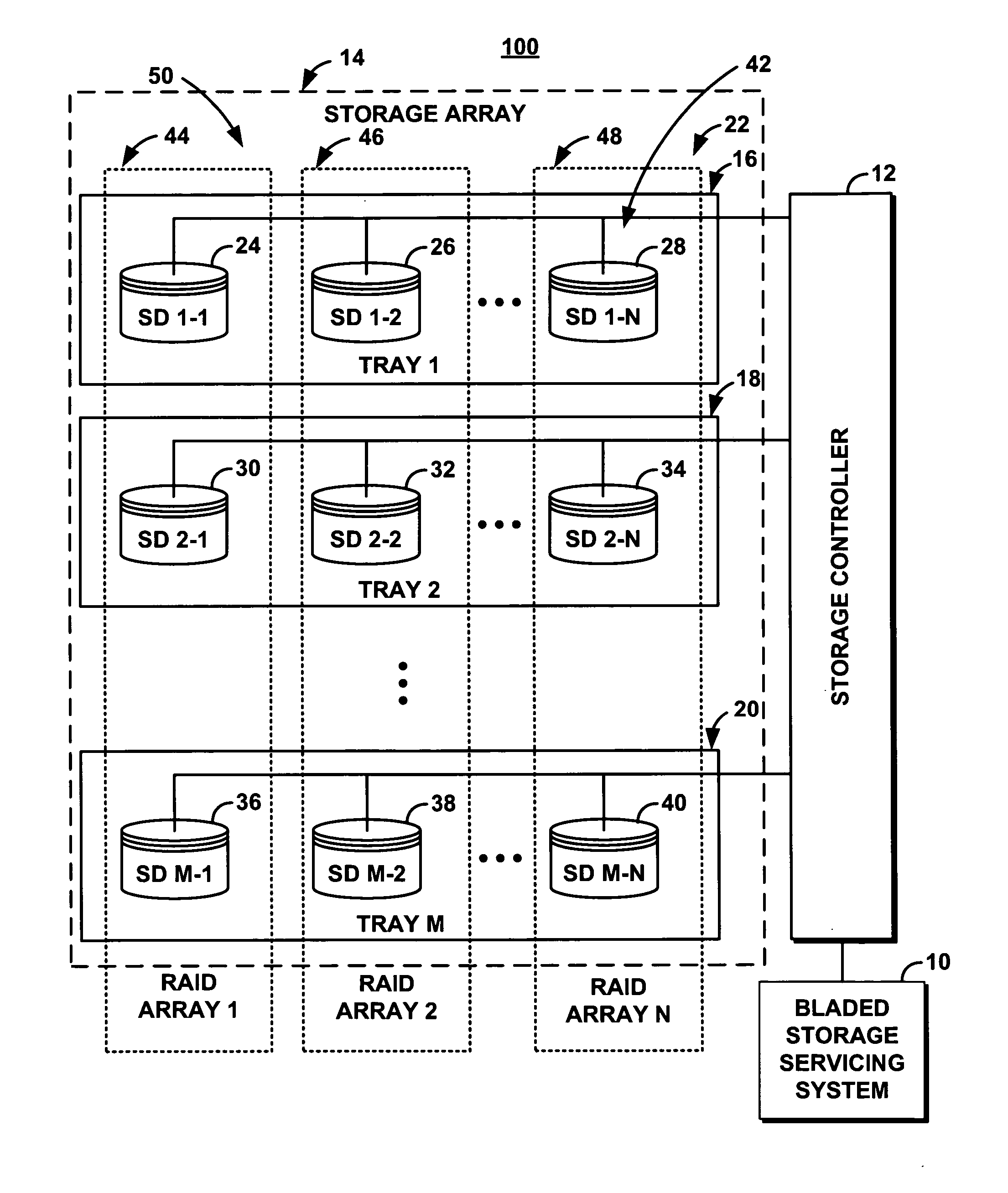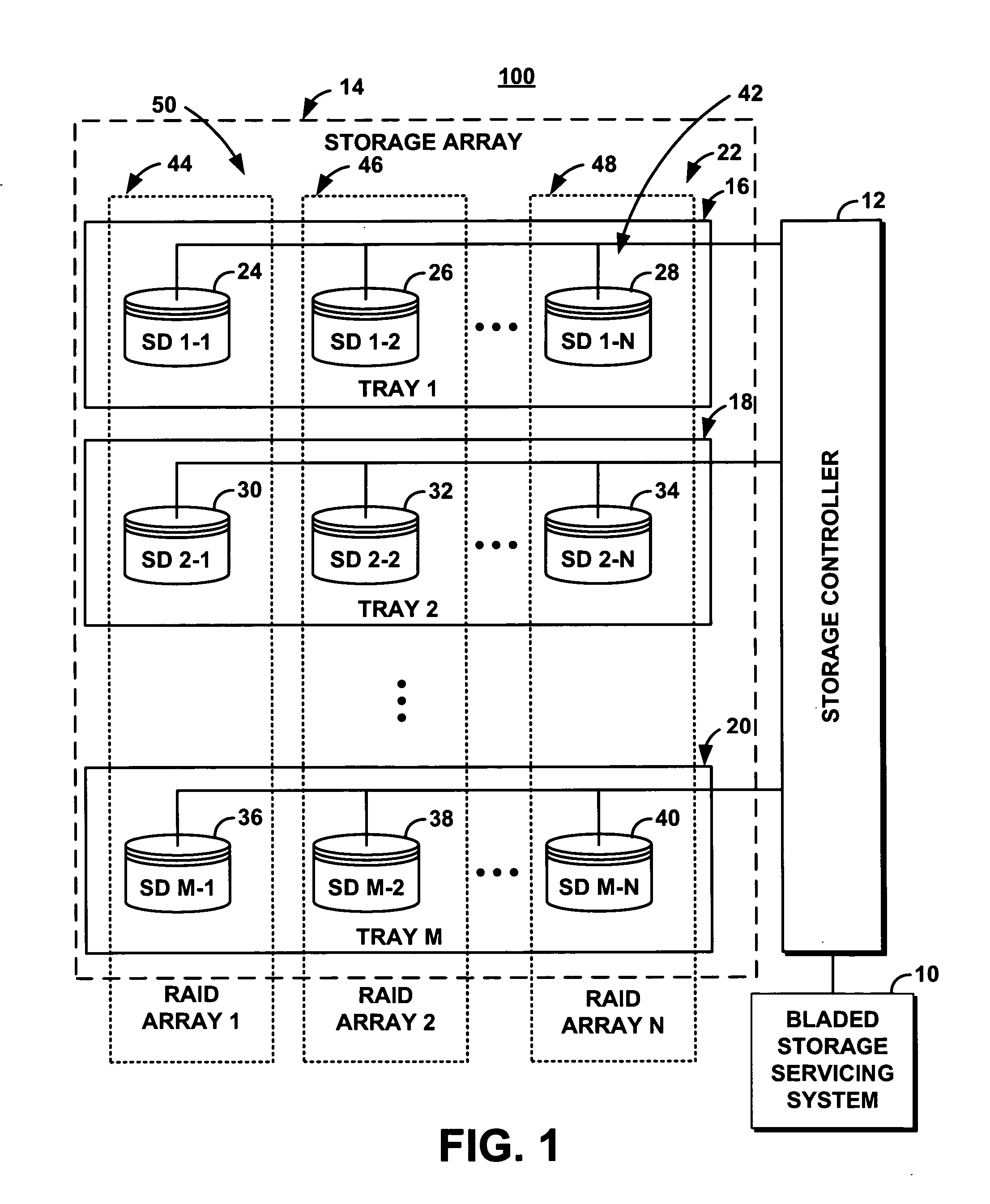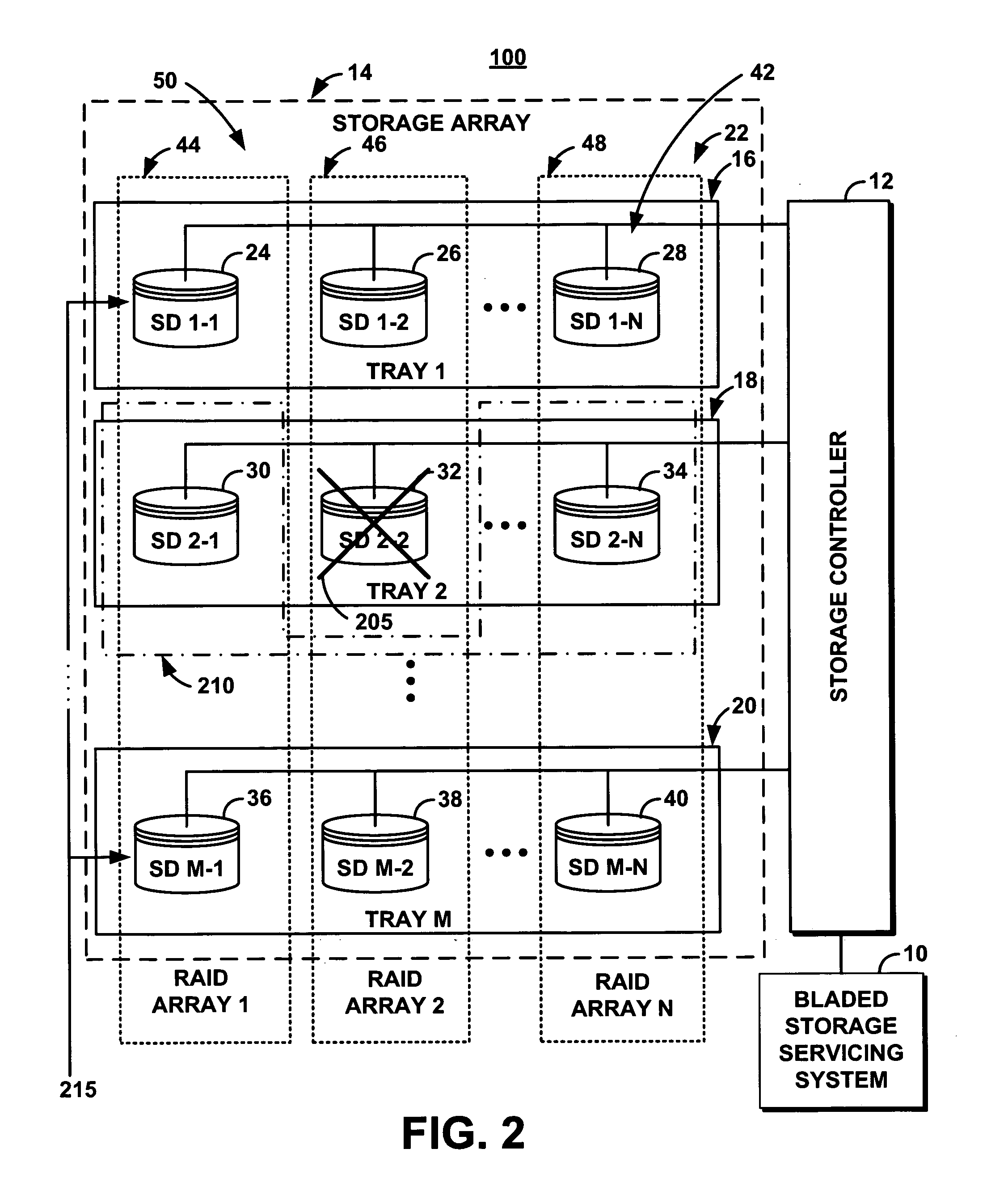System and method for servicing storage devices in a bladed storage subsystem
a storage subsystem and blade technology, applied in the field of storage systems, can solve the problems of increased write penalty of schemes such as 3-fault-tolerant schemes, failure to remove and replace failed drives, and low storage efficiency of schemes such as raid 51
- Summary
- Abstract
- Description
- Claims
- Application Information
AI Technical Summary
Benefits of technology
Problems solved by technology
Method used
Image
Examples
Embodiment Construction
[0017]FIG. 1 illustrates an exemplary high-level architecture of a storage system 100 comprising a system and an associated method (the “bladed storage servicing system 10” or the “system 10”). System 10 includes a software programming code or computer program product that is typically embedded within, or installed on a computer. Alternatively, this program can be saved on a suitable storage medium such as a diskette, a CD, a hard drive, or like devices.
[0018] The storage system 100 comprises a storage controller 12. The storage controller 12 controls storage devices in a storage array 14. The storage array 14 comprises a tray 1, 16, a tray 2, 18, through a tray M, 20 (collectively referenced as trays 22). Tray 1, 16, comprises storage devices such as storage device 1-1 (SD 1-1), 24, storage device 1-2 (SD 1-2), 26, through storage device 1-N (SD 1-N), 28. Tray 2, 18, comprises storage devices such as storage device 2-1 (SD 2-1), 30, storage device 2-2 (SD 2-2), 32, through storage...
PUM
 Login to View More
Login to View More Abstract
Description
Claims
Application Information
 Login to View More
Login to View More - R&D
- Intellectual Property
- Life Sciences
- Materials
- Tech Scout
- Unparalleled Data Quality
- Higher Quality Content
- 60% Fewer Hallucinations
Browse by: Latest US Patents, China's latest patents, Technical Efficacy Thesaurus, Application Domain, Technology Topic, Popular Technical Reports.
© 2025 PatSnap. All rights reserved.Legal|Privacy policy|Modern Slavery Act Transparency Statement|Sitemap|About US| Contact US: help@patsnap.com



